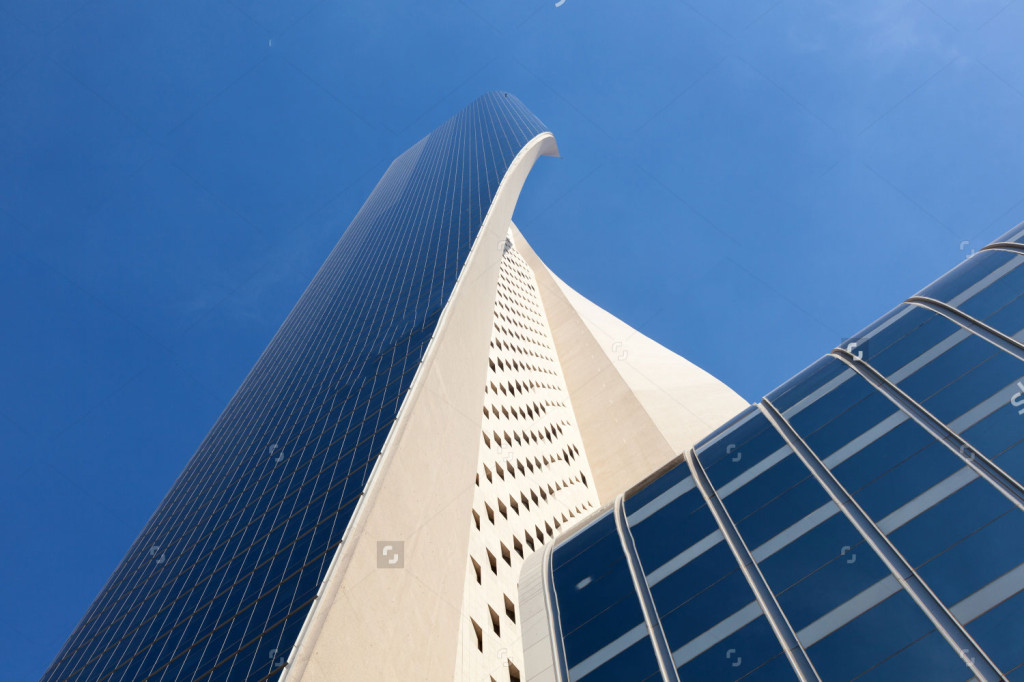Geography
The State of Kuwait is located in the northeast corner of the Arabian Peninsula and shares borders with Iraq to the north and Saudi Arabia to the south. It has nine islands, all of which are uninhabited, with the exception of Failaka Island. With an area of 860 km2 (330 sq mi), Boubyan is the largest island in Kuwait and is connected to the rest of the country by a
2,380 m (7,808 ft) long bridge. The capital, Kuwait City, is located on Kuwait Bay.
Area
Kuwait covers an area of 17,818 sq km, (6,880 sq miles). The country is generally low lying, with the highest point being 306 m (1,004 ft) above sea level.
Climate
Kuwait’s weather in the spring season is usually warm and pleasant with occasional thunderstorms. The frequent winds from the northwest are cold during the winter and spring and hot in the summer. Southeasterly winds, which are usually hot and damp, spring up between July and October; hot and dry southern winds prevail in the spring and early summer. The shamal, a northwesterly wind common during June and July, causes dramatic sandstorms. The temperatures in Kuwait
during the summer are usually above 33°C (91.4°F).
Population
In 2014, Kuwait’s population stood at 3.360 million with expatriates accounting for a significant 70%. Growth rate is a steady 1.8% a year.
Ethnic Groups
80% of the total population in Kuwait is Arab, 9% are South and East Asian, and 4% are Iranian. Indian nationals make up the single largest expatriate community.
Language
Arabic is the official language of Kuwait, though English is widely spoken. English is a compulsory subject taught at all schools and is largely used as the language of business. Other languages spoken among expatriates in Kuwait include Farsi, Urdu, Hindi and Tagalog.
Trade
- Natural resources include petroleum, fish, shrimp and natural gas.
- Exports amount to US$ 112 billion (2013) and consist mainly of oil and refined products, as well as fertilizers.
- Imports amount to US$ 22.42 billion (2013) and consist mainly of food, construction materials, clothing and vehicles.
Economy
Kuwait has a geographically small, but wealthy, relatively open economy with crude oil reserves of about 102 billion barrels – more than 6% of world reserves. Petroleum accounts for nearly half of GDP, 95% of export revenues, and 95% of government income. Kuwaiti officials have committed to increasing oil production to 4 million barrels per day by 2020.
Budget surpluses have stayed around 30% of GDP, which has led to higher budget expenditures, particularly wage hikes for many public sector employees, as well as increased allotments to Kuwait’s Future Generations Fund.
In 2010, Kuwait passed an economic development plan that pledges to spend up to $130 billion over five years to diversify the economy away from oil, attract more investment, and boost private sector participation in the economy, though much of these funds have yet to be allocated.
Kuwait posted a $45bn surplus during the 2013/14 fiscal year – its second-largest on record – with oil revenues climbing to KD29.3bn ($99.6bn), according to the latest data issued by the Ministry of Finance. The IMF forecasts that the current account and fiscal surpluses should remain high into 2015, following years of record budget surpluses. However, these are likely to slip due to recent developments in the global oil market.
Currency
The currency used in Kuwait is the Kuwaiti Dinar (KD). The KD is pegged to a basket of currencies. The exchange rate to the United States Dollar (US) on 1 January 2015 – was US$ 1 = KD 0.30
Inflation
In 2013, the inflation rate was 3.5%.
Government
Kuwait is a constitutional monarchy, governed by the Al-Sabah family. The head of state is His Highness the Amir, Sheikh Sabah Al- Ahmad Al-Jaber Al-Sabah. The head of government is the Prime Minister, Sheikh Jaber Al-Mubarak Al-Hamad Al-Sabah. The members of the Council of Ministers are appointed by the prime minister and approved by the Amir.
Kuwait’s unicameral National Assembly or Majlis Al-Umma includes 65 seats. Fifty members are elected by popular vote in addition to 16 government cabinet ministers, one of whom is also an elected member of parliament. Government cabinet ministers are appointed by the prime minister as ex officio voting members. Elected members serve four-year terms.
National Holidays
Kuwait celebrates a number of public holidays, some of which are celebrated according to the Islamic calendar and others are celebrated according to the Gregorian calendar. The Islamic calendar consists of twelve lunar months, the beginnings and endings of which are determined by the sighting of the crescent moon. Accordingly, Islamic holidays are timed according to local sightings of various phases of the moon. Some of the dates for Islamic holidays given below are approximations and change from year to year.
• New Year’s Day: 1 January
• Birth of the Prophet: 3 January
• National Day: 25 February
• Liberation Day: 26 February
• The Prophet’s Ascension: 16 May
• Eid Al Fitr: 19 July
• Eid Al Adha: 24 September
• Al Hijra New Year: 15 October
* 2016 subject to change
Weekends
The weekend in Kuwait is Friday and Saturday.
Local Time And Business Hours
Local time: GMT +3 hours
The working hours for government offices are: 07:00 – 14:00 Sunday – Thursday (closed Friday & Saturday).

0 Comments
Leave A Comment